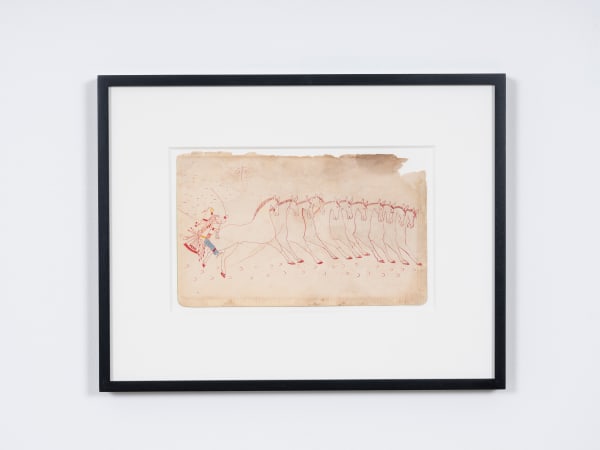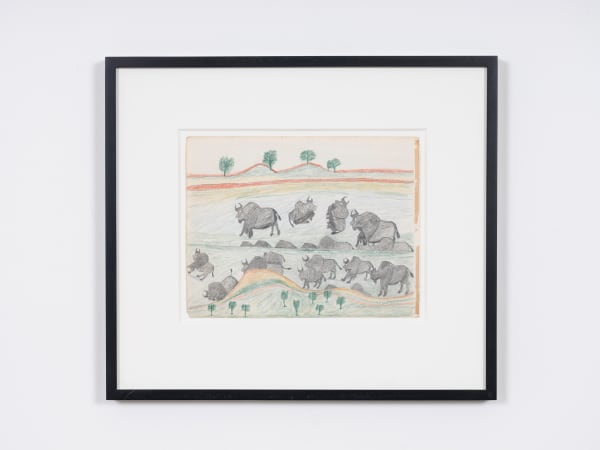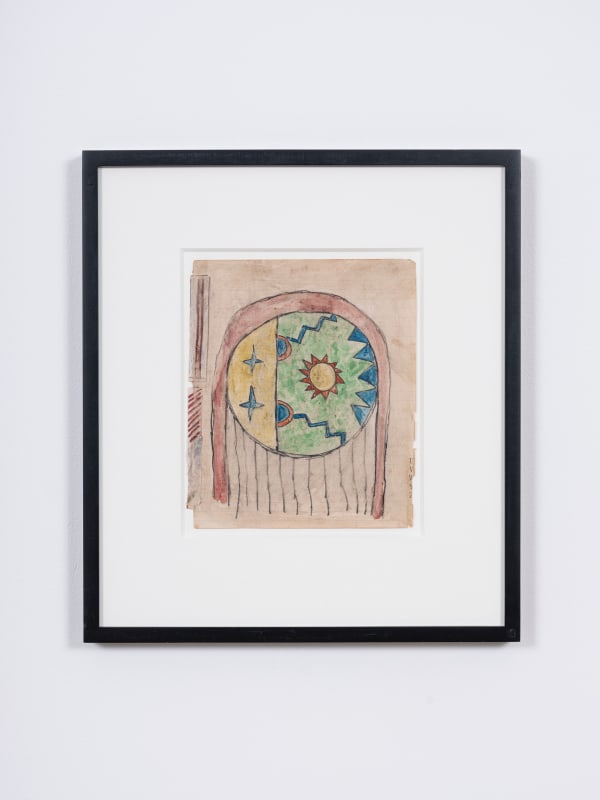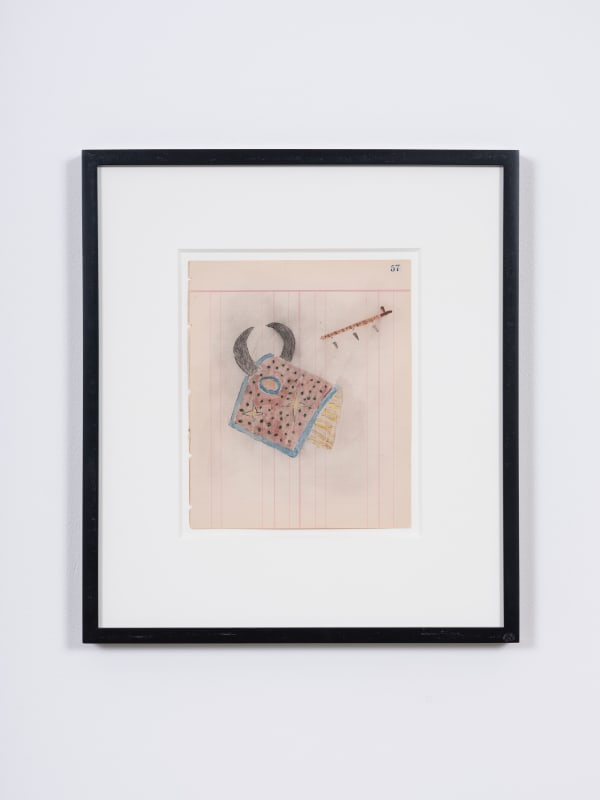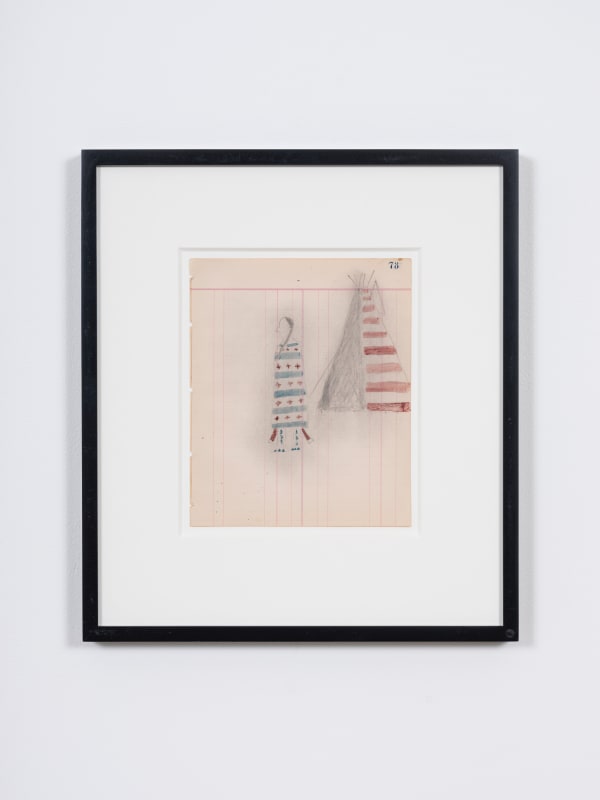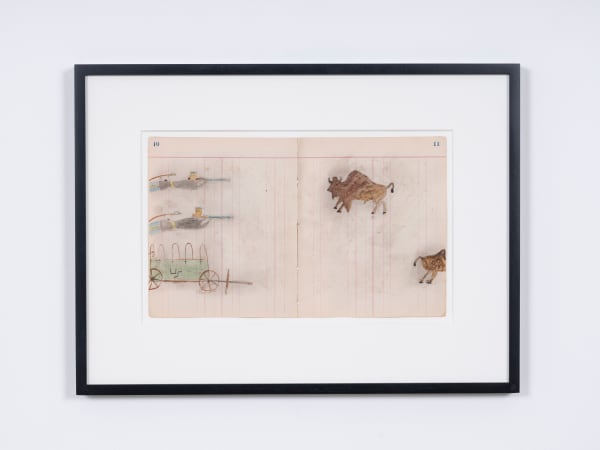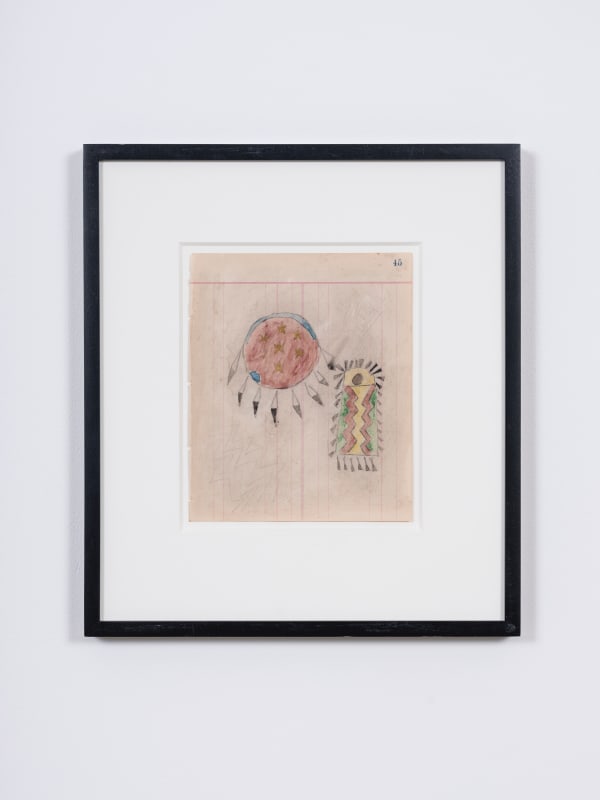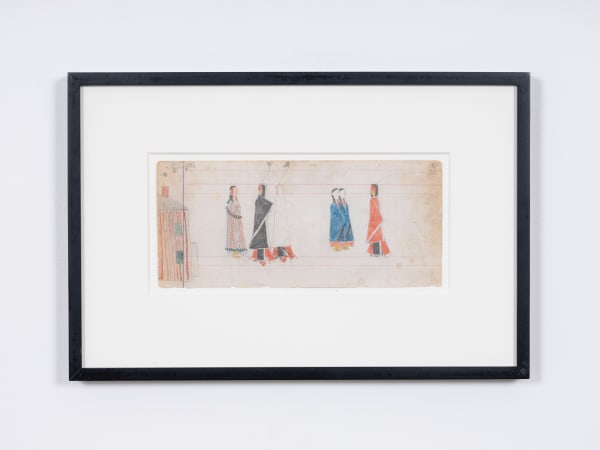STANDARD (OSLO)
PRESS RELEASE
-----
PLAINS LEDGER DRAWINGS, 1870 - 1920
WORKS FROM DONALD ELLIS GALLERY
11.10.-02.11.2019 / Preview: 11.10.2019 / 19.00-21.00
-----
From the pages of worn ledgers emerge a fairly simple pictorial language. Illustrations of rituals, customs, relics, and the military exploits of incarcerated indigenous populations whose lives were brutally and forcefully upended at the hands of the U.S. government. Created by Cheyenne, Crow, Hunkpapa Lakota, Kiowa, Lakota Sioux, and Southern Cheyenne on view are 48 drawings dating from 1870s - 1920s. What would be known as the early reservation period.
With no substantial power left under the imposed colonial structure, the tales depicted subvert that very condition with their displays of bravery, aptitude, and male heroism. An immense sense of pride exudes from these stories of recent past. The repetitive elucidation of men stealing horses in the Macnider Ledger Book ca. 1880- purple, yellow, red, green, brown horses are lead from right to left indicating their successful capture. An achievement held in highest esteem. The heightened military conflict brought on by the white man's insurgence is recorded through generic battle scenes and specific wars. Arrows scatter the pages into the bodies of the aggressors with the protagonist in full battle regalia. One Lakota drawing on a "Statement of Attendance-continued" ledger references Red Eagle and Battle of Wounded Knee. A critical event in the history of the conflicts where the subject's involvement would have directly led to their incarceration. With such strength and valour evoked amongst these drawings, one might mistakenly consider these stories the triumphant records of the winning side, not the point of view of the captured.
There is a rhythmic harmony in scenes aligned with the everyday. A reverence for a way of life that was, and a preservation of traditions passed down through generations. A serene landscape of grazing buffalo is then a ruthless reminder of the U.S. government's policy to massacre the food source as a means to force the signing of treaties. The railroad- an early encounter with modernity and the vehicle with which populations were transported to their internment; as seen in "Indian Prisoners En-Route from Fort Sill to The Rail Road", attributed to Ho-na-nist-to, also know as Howling Wolf, of the Southern Cheyenne in the Central Plains. A gentler but no less male dominant romance appears in the triptych of Sheridan Ledger drawings. Courting rituals in which a male demonstrates his prowess by winning his chosen woman. In these customs a blanket or cloak presented by the male figure. Once accepted by the female the textile is wrapped around both indicating the union.
The physical materials put to use are that of the white man. Ledger books typically consist of lined paper intended for business transactions and accountancy records including details of food supplies at the reservation or the list of troops stationed there. Graphite, colored pencil, ink and watercolour were obtained through theft, gift and purpose. These tools allowed for the recounting of stories and the practice was even encouraged for the prisoners. A historical record of the past, the images rendered do not adhere to Western ideals of representation. The accuracy with which a figure is portrayed is of far less concern than the specificity of say the formal dress and the symbolism it represents. Many individual artists are attributed such as He Nupa Wanica, also know as Joseph No Two Horns, who fought at the Battle of Little Bighorn and lived to be 90 years old. Many remain anonymous. In a constant pattern of repression these ledgers are sometimes named for the particular white soldier that presided over them.
-----
Installation photography: Vegard Kleven






